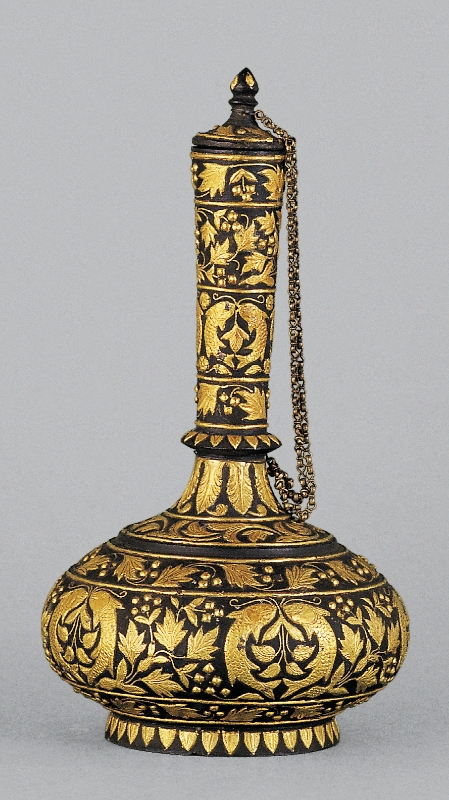Surahi (Wine Flask)
Description
The art of Bidri was very popular from the early 17th Century CE. It takes its name from the city of Bidar in the Deccan where it originated. It was used for a wide variety of everyday articles like pandan (savoury box), surahi (wine flask), huqqa (hubble bubble), etc. The base metal of Bidri is an alloy of zinc, copper and lead on which elaborate inlay is done. Fine wires, as well as pieces of silver, brass and occasionally gold, are inlaid in grooves etched upon the surface of the article which is darkened with chemical treatment, creating a pleasant contrast between the design and ground areas. Popular designs are floral or geometrical patterns and also include motifs like the Swastika - an auspicious symbol in India, the Fish - a royal emblem of Oudh Nawabs, and the Mahipusht - fish scale pattern.
This surahi features an alternating pattern of a pair of fish and vine creepers. It is decorated with the ‘zar-buland’ technique where the metal is laid over a lead pad to provide high relief. Inlay of silver, brass, and copper is common in bidri ware. This piece is rare as it is inlaid with gold.
School of Art Collection
Collection
Indian Decorative Art
Object Type
Bottle
Material
Alloy, Gold
Schools/Culture/Period
--
Technique
Bidri
Date
18th Century CE
Location
Lucknow, Uttar Pradesh
Dimension
H 23.5 x D13 cm
